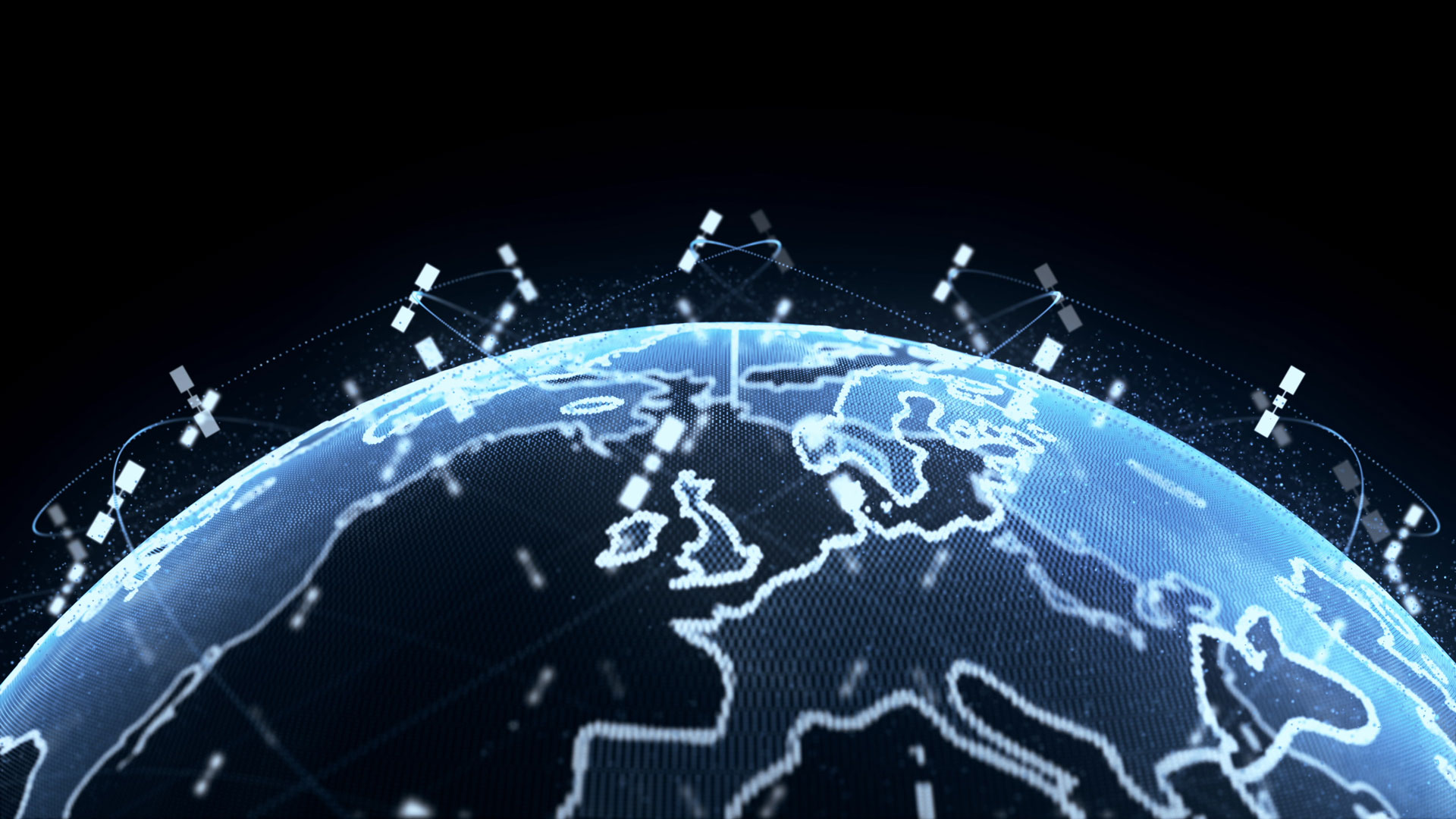We are the creators of our own future – that’s how we closed the first article of this series. But as empowering as this statement is, it also has a lingering sense of truth to it. If what our world will look like is up to us, this means that the responsibility of making it a better and functional one rests on our shoulders.
Launch service providers, satellite manufacturers and operators, and ground stations all depend on one commodity: space. This may sound like a trivial affirmation, but July’s IPCC report tells us that it is indeed a necessary one. After all, if we have been struggling with protecting our planet, isn’t it fair to assume that we may cause the same issues once we venture beyond it?
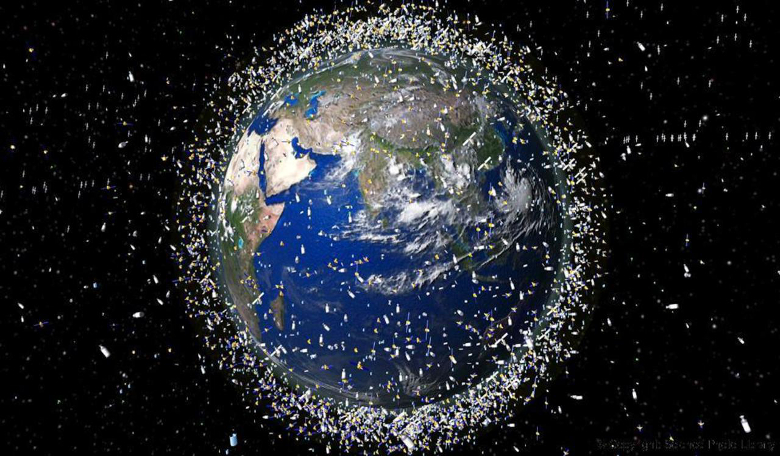
An Overcrowded Sky
Some are already thinking (too much) ahead with hypotheses of building a Dyson sphere around our Sun in order to achieve immortality. Incredible indeed. But despite the many theoretical benefits of Dyson spheres, our behavior on Earth today may put all speculation to rest and keep us locked on the surface.
If you’re wondering why, the answer is simple: satellite mega-constellations.
The term mega-constellation describes a constellation consisting of several hundreds or thousands of satellites orbiting Earth. The most remarkable plan is Starlink’s with its plan to deploy a staggering 42,000 satellites in Low Earth Orbit (LEO). Amazon’s Kuiper will launch over 3000, and OneWeb plans to have 648. We also can’t fail to mention China, which plans to launch an internet services mega-constellation of 13,000 units.
But all of this is just the beginning. According to forecasts, there could be about 100,000 satellites roaming LEO by 2030. This will not only crowd LEO even more but will undoubtedly add both to the number of inactive satellites and the risk of collisions. Here is where space debris enters the conversation. However, there are some other issues to consider before we even venture into that specific topic.
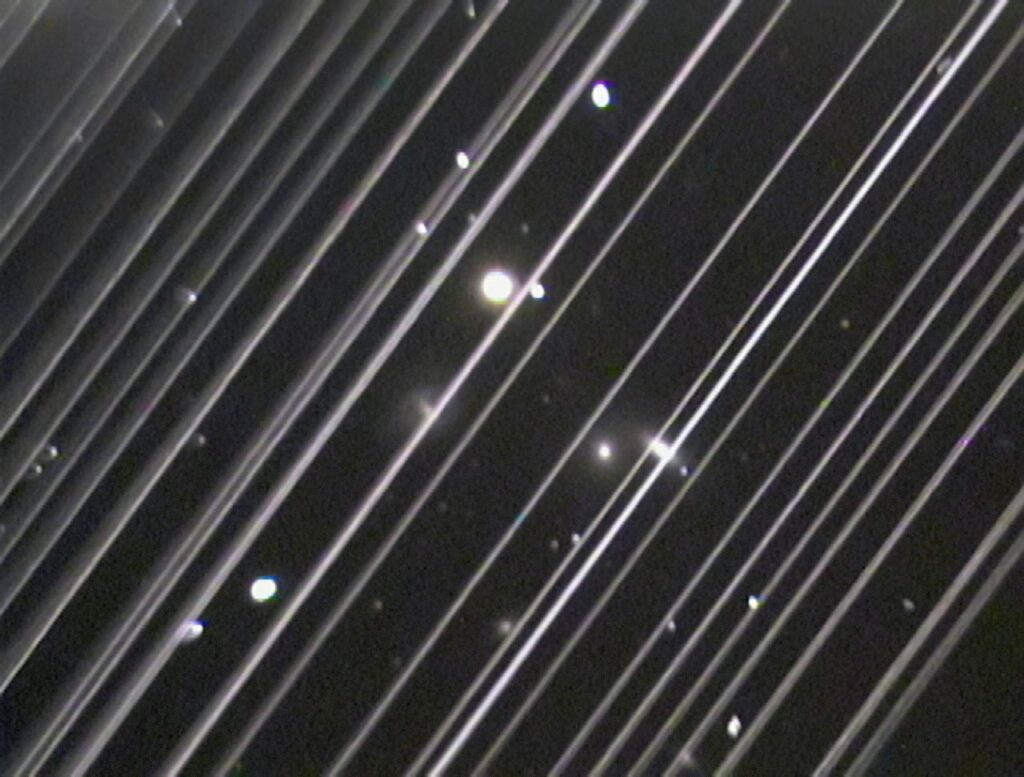
Blindfolding Astronomy
We have looked up at the sky for millennia. The sky has made those who came before us dream to the point that they built structures in alignment with the stars above us. It fascinated Galileo Galilei so much that he almost sacrificed his life to uncover its concealed truths.
In an era where our observational instruments are so accurate, we are able to identify potential “second Earths”. But we also risk turning astronomy into a blind martyr of human mistakes – a modern-day St. Lucy. The main concern in this regard is that satellite constellations are quite visible from the ground, especially at dawn and dusk. This is the same time that many observatories carry out their investigations. The threat is so real that the American Astronomical Society published a report saying that “Nighttime images without the passage of a sun-illuminated satellite will no longer be the norm.”
Starlink’s satellite trails and their reflected sunlight are already causing disturbances to some telescopes. If the number of devices orbiting our planet continues to increase so dramatically, the problem of mega-constellations will have a far-reaching impact on astronomical research.
A somber irony considering that the very knowledge that allowed for the development of satellite technology has its foundations in astronomy.
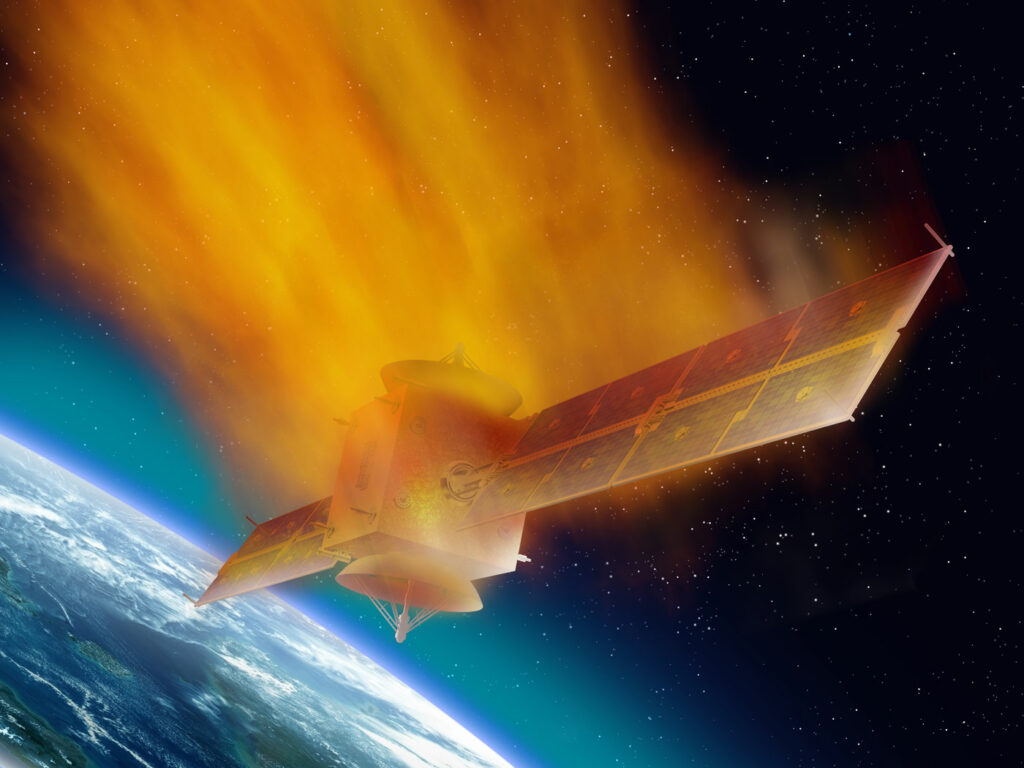
A Stratospheric Disaster
Objects burning in our atmosphere are nothing new – meteoroids do it all the time. And not even the rise of mega-constellations will surpass their number. To put it into numbers, about 60 tons of meteoroid material hits our atmosphere daily, whereby Starlink’s first generation (12,000 satellites) would see only about 2.2 tons of dead satellite re-entering Earth’s atmosphere. However, the problem lies in the chemical difference between a meteoroid and a satellite; the former is made of oxygen, magnesium, and silicon, while the latter is mostly aluminum, a metal that makes up only 1% of a meteoroid.
Here is where the issues arise. When aluminum burns, it produces aluminum oxide, thereby triggering consequences that could change the chemical composition of the upper atmosphere. For instance, aluminum oxide tends to reflect light at certain wavelengths. This means that: if we allow it to accumulate in the atmosphere, it could increase the planet’s albedo (i.e., the amount of light it reflects).
Pumping chemicals into the atmosphere is nothing new. Scientists did it to close the largest-ever ozone hole at the North Pole. On a larger scale, releasing light-reflecting aluminum oxide has been proposed as a potential way to combat global warming. This is often referred to as geoengineering – but it is not without controversy. That’s because aluminum oxide is also a component in solid-fuel rockets and is known to deplete ozone and create small, temporary holes in the stratospheric ozone layer.
Considering the numbers we cited at the start of this article, the concerns about satellite mega-constellations and the threat they pose to the environment are far from unjustified. If voluntarily geoengineering the planet is something scientists dread because of its vastly unknown effects, having it happen as consequence of our own behavior is just as worrying.
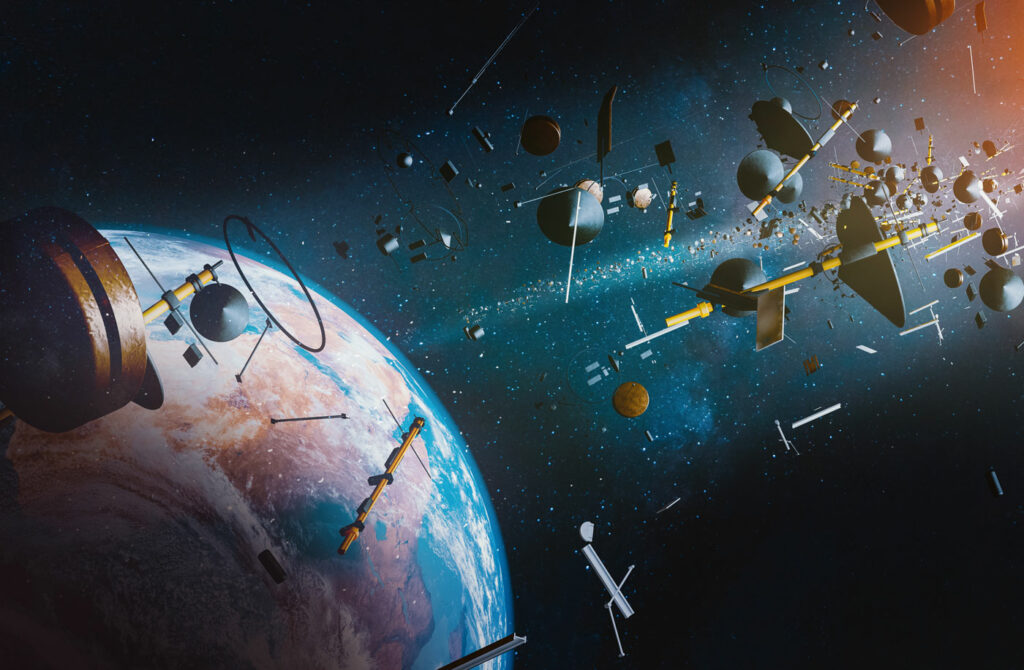
Building Our Own Cage
We are the first generation capable of turning our species’ star-filled dreams actual exploration. But we could also be both the first and last ones to do it – at least for a long time. The culprit? Space debris.
The term space debris refers to masses of defunct, artificially created objects in space, especially those within the Earth’s orbit. These include old satellites and spent rocket stages as well as the fragments from their disintegration and collisions. These objects come from the thousands of launches that have been carried out since the dawn of the Space Age. But they are mostly the result of in-orbit break-ups and some collisions. To put it into numbers, the United States Space Surveillance Network maintains and tracks approximately 22,300 of these objects. On top of that, estimates say that there are 34,000 objects above 1 cm in diameter, 900,000 objects between 9 cm and 10 cm, and a shocking 128,000,000 objects from 1 mm to 1 cm orbiting Earth.
Reading this data makes it easy to understand why this is an issue: in outer space, 1 mm of aluminum moves with the energy of a bowling ball thrown at 100 km/h. Any collision event between space debris and crewed spacecraft or satellites is thus a disaster. And the risk of this happening becomes higher as we deploy more instruments into LEO.
The inevitable increase in space waste that mega-constellations entail could, in the long run, trigger a domino effect that would result in the Kessler Syndrome. Proposed by NASA scientist Donald J. Kessler in 1978, this theory describes a scenario in which the density of objects in LEO is high enough that collisions between objects could cause a cascade. Each collision generates space debris that increases the likelihood of further collisions. Outer space is incomprehensibly vast. But the Earth’s orbits are quite limited. The worst-case scenario for the Kessler Syndrome is that some, if not most, orbits will end up becoming so polluted that it will become impossible to deploy new satellites. It would even become unfeasible to launch any spacecraft into space. We would essentially be creating our own cage and locking ourselves outside the universe.
Considering that the amount of debris in space would increase even if we stopped all space-related activities, it is an understatement to say that we urgently need to address this problem.
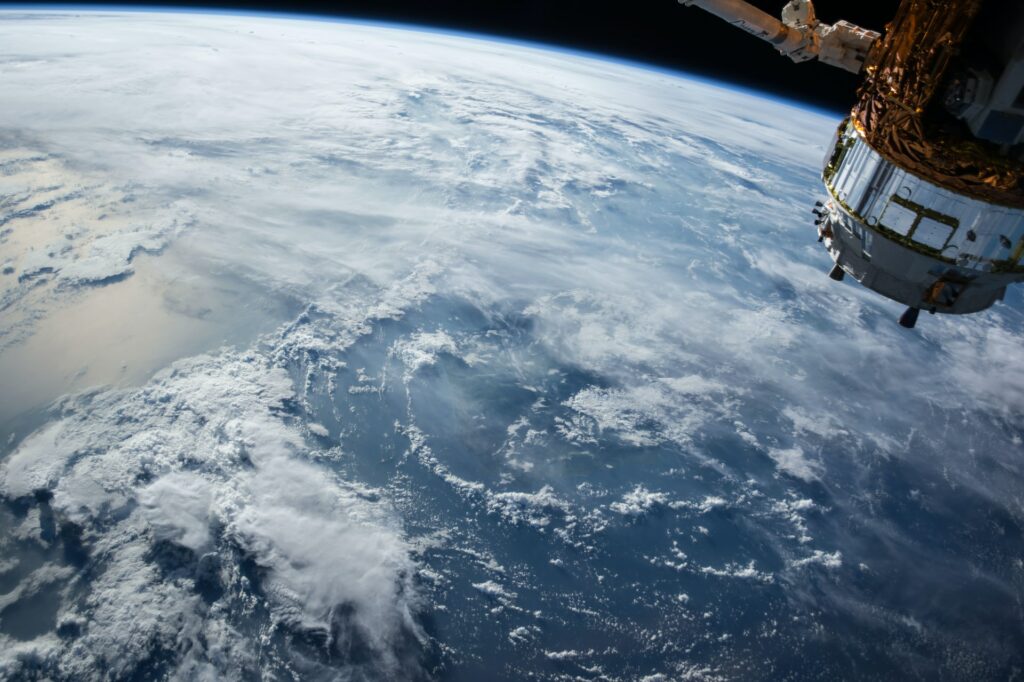
In the heavens as it is on Earth
As humans, we have never been aware of the consequences our actions have on our planet. We never thought the amount of plastic we put in the oceans would have such an impact on the ecosystem. Likewise, some still refuse to even accept the fact our carbon emissions heavily influence the global climate.
On the ground, our planet cries tears of melting ice and pleads for help with screams of wildfire. Above the sky, waste and debris amasses and, if we repeat the mistakes we have made on the surface, we may soon find ourselves locked in our burning home while unable to look for a new one.
In the middle, there is us – a species with a remarkable ability to adapt.
This one skill has led us a long way. And it may once again be our saving grace.
Despite the situation being critical, we are far from being out of options. The future is in our hands. Our next article will deal with the tools we can use and develop in order to save the future of our most promising commodity: space.
Subscribe to our Monthly Wrap Up if you don’t want to miss the next article of the series!
Sources:
IPCC Report – https://www.ipcc.ch/report/ar6/wg1/
A Dyson Sphere Could Bring Humans Back From the Dead, Researchers Say – https://www.popularmechanics.com/science/a35788050/dyson-sphere-digital-resurrection-immortality/
IGI Global, Definition of “mega constellation” – https://www.igi-global.com/dictionary/mega-constellations/71927
Space.com, Starlink: SpaceX’s satellite internet project – https://www.space.com/spacex-starlink-satellites.html
Forbes, Amazon Is Going To Add 3,000 More Satellites Into Earth’s Orbit – https://www.forbes.com/sites/jonathanocallaghan/2020/07/31/amazon-is-going-to-add-3000-more-satellites-into-earths-orbit–and-people-are-not-happy/?sh=72ea60fc7628
OneWeb surpasses 200 satellites with Soyuz launch – https://spaceflightnow.com/2021/05/28/oneweb-surpasses-200-satellite-mark-with-soyuz-launch/
China’s Plans For A 13,000 Satellite Megaconstellation – https://industryeurope.com/sectors/aerospace-defence/china-s-plans-for-a-13-000-satellite-megaconstellation/
Satellite mega-constellations create risks in Low Earth Orbit, the atmosphere and on Earth – https://www.nature.com/articles/s41598-021-89909-7#Sec1
American Astronomical Society 2020 report – https://aas.org/sites/default/files/2020-08/SATCON1-Report.pdf
North Pole’s largest-ever ozone hole finally closes – https://www.space.com/arctic-ozone-hole-closes.html
Harvard Researchers Are Preparing to Geoengineer the Atmosphere – https://www.space.com/36431-harvard-researchers-geoengineer-earth-atmosphere.html
THE LEGAL STATUS OF SPACE DEBRIS –https://www.spacelegalissues.com/the-legal-status-of-space-debris/
WILL OUTER SPACE SOON BECOME INACCESSIBLE? https://www.spacelegalissues.com/will-outer-space-soon-become-inaccessible/

